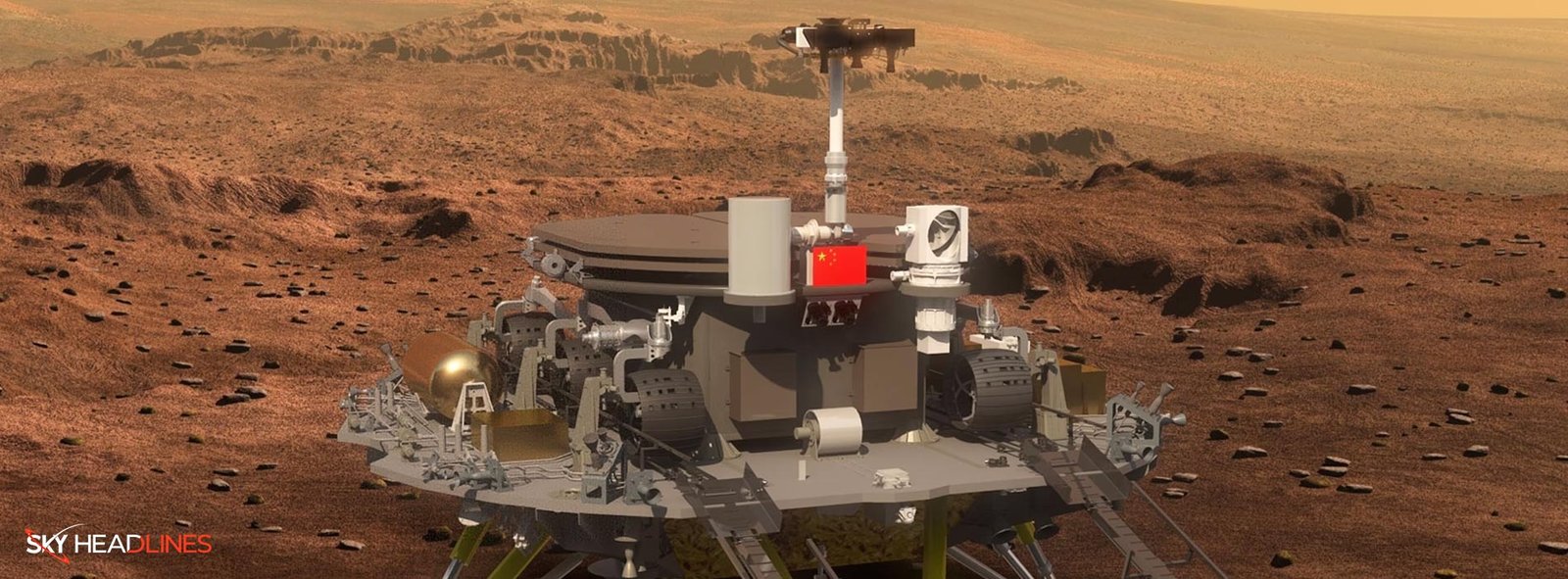Zhurong rover was on the project to explore once existed components on the surface of Mars. It was launched on the planet by China to observe certain aspects of the planet.
For how long the Zhurong rover project is working on Mars?
The Zhurong rover has been working on the surface of Mars since May 22, 2021. Before the rover stopped working on May 20, 2022, because winter had started and sandstorms were coming, Zhurong had gone a total of 1.921 km (1.194 mi). During the first kilometer of this trip, the rover learned important information about Mars’ very weak magnetic fields. According to a new study by experts from the Chinese Academy of Science (CAS), these readings show that the magnetic field is very weak where the rover landed.
The research was led by Aimin Du, Yasong Ge, and Huapei Wang, three teachers at the CAS Engineering Laboratory for Deep Resources Equipment and Technology and the Institute of Geology and Geophysics (IGGCAS). A collaboration brought together researchers from a wide array of institutions. This project of Zhurong rover brought together a diverse team of experts. This project involved experts from different places.
Give an introduction of team in Zhurong rover project
The people involved came from different institutions related to space and astronomy research. They came from the Institute of Spacecraft System Engineering (ISSE), the National Space Science Center, the College of Earth and Planetary Sciences, the School of Geophysics and Geomatics, and the National Astronomical Observatories. The team of Zhurong rover project also included specialists from various well-respected universities and research institutes. The study paper that explains what they found was recently published in the magazine Nature Astronomy.
What did the team observed at the surface of Mars?
Even though Mars does not have an internal magnetic field (also called a magnetosphere), there is proof that it did about 4 billion years ago. This proof is written in the soil of the planet, which still has weak magnetic fields spread out over the surface. The Mars Global Surveyor (MGS) and Mars Atmosphere and Volatile EvolutioN (MAVEN) satellites collected data from orbit about these subjects. They found that crustal fields on Earth were as strong as 1,500 nanoteslas (nT), but on average, they were only about 200 nT.
When studying the crust in the Elysium Planitia region, the InSight fluxgate magnetometer (IFG) on NASA’s InSight mission got readings that were an order of magnitude greater, or about 2,000?nT. The first rover to have fluxgate magnetometers was Zhurong rover. It took magnetic readings from 16 sites along a 1,089 m (3,570 ft) track in the Utopia Planitia region, which is about 2,000 km (1240 mi) northwest of where the InSight mission landed. But Zhurong’s two magnetometers gave readings that were the exact opposite of what the Insight lander got.
What were the results collected from Zhurong rover project?
The results showed that the field strength was about 20 nT, which is an order of magnitude smaller than the readings made from space. These very weak readings suggest that the crust under Utopia Planitia may not have been magnetic since it formed in the early Hesperian (around 4 billion years ago) or that it was demagnetized by a large impact that came later. These results of Zhurong rover put a new limit on how long Mars’ magnetosphere lasted and when it disappeared. They also show how the past of Mars’s magnetism, climate, and interior are linked.
Astrobiological studies on Mars need to know how and when Mars’ magnetic field vanished. Scientists hope to find out if there was enough time for life to develop on Mars by learning how and when it changed from a warm planet with moving water on its surface to the very cold, dry place it is today. Knowing this could also help figure out where it might still be found today.





